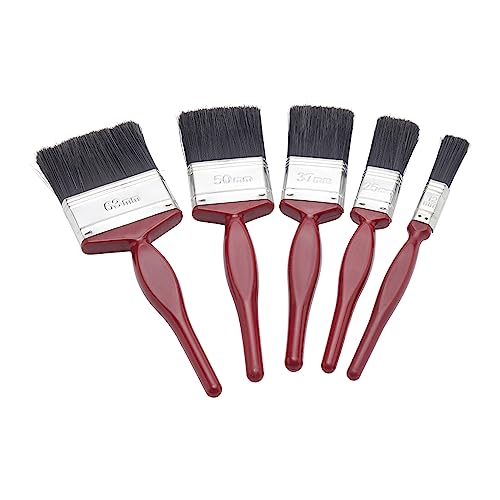The importance of choosing the right size paintbrush
When it comes to painting, the size of your paintbrush can make a significant difference in the overall outcome of your project. The right size brush will allow for more precise and controlled strokes, resulting in a professional-looking finish. On the other hand, using the wrong size brush can lead to uneven coverage, sloppy lines, and a generally unsatisfying result. So, what are the different sizes of paintbrushes available, and when should you use each?
Understanding brush sizes
Paintbrushes are typically categorized by size, which is determined by the width of the bristles at the ferrule, or the metal part that holds the bristles. The sizes of paintbrushes can vary across different brands and manufacturers, but they generally follow a standard numbering system. The most common brush sizes range from 000 (the smallest) to 24 (the largest). However, keep in mind that sizes can also vary within the same brand, so it’s essential to examine the brush itself rather than relying solely on the number.
Different brush sizes for different purposes
The size of the brush you choose will depend on the type of project you’re working on and the specific details you want to achieve. Here are some common brush sizes and their recommended uses:
– Small, fine brushes (such as sizes 000 to 2) are perfect for intricate detail work, such as painting small figurines or adding subtle highlights to a larger painting. These brushes allow for precise control and delicate strokes.
– Medium-sized brushes (such as sizes 4 to 8) are versatile and suitable for a wide range of painting tasks. They can be used for both large areas of coverage and more detailed work. These brushes are commonly used to paint small to medium-sized canvases or objects.
– Large brushes (such as sizes 10 to 24) are ideal for covering large areas quickly. They are commonly used for painting larger canvases, walls, or furniture. These brushes are also suitable for creating broad strokes and blending colors together.
Choosing the right brush for your painting style
While understanding the recommended uses for different brush sizes is helpful, it’s also crucial to consider your own painting style and preferences. Some artists may find that they prefer to work with smaller sizes for more control, while others may enjoy the freedom and expression that larger brushes provide. Experimenting with different brushes can help you discover which sizes work best for you and your desired effect.
Additionally, keep in mind that brush sizes are not limited to just rounds or flats. There are also filberts, fans, liners, and other specialty brushes that come in various sizes. These brushes serve different purposes and can add unique textures and effects to your paintings.
Conclusion
Choosing the right size paintbrush is essential for achieving the desired results in your painting projects. By understanding the different brush sizes available and their recommended uses, you can select the appropriate brush for each specific task. Remember to consider your own painting style and experiment with different brush shapes to add variety and depth to your artwork. With the right brushes in hand, you’ll be well-equipped to create beautiful, professional-looking paintings.






